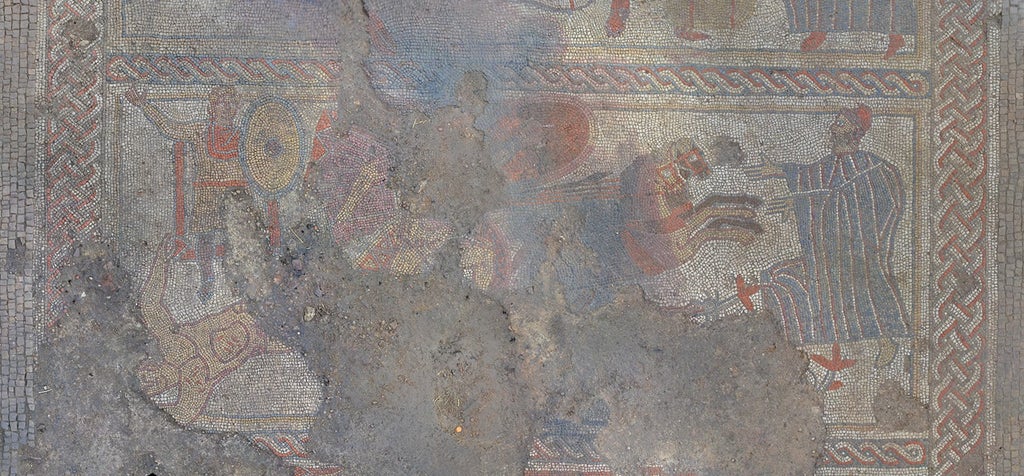
A Roman mosaic unique in Britain depicting one of the most famous battles of the Trojan War has been uncovered in a farmer’s field.
Historic England claimed that the artwork was found in excavations of an elaborate villa complex with a number of buildings.
Because of its rarity and import, the site was declared a designated monument by the Department for Digital, Culture, Media and Sport. It was officially announced on Thursday.
The mosaic depicts a scene from Homer’s The Iliad – about the epic fight between Achilles and the Trojan hero, Hector.
It is one among only a few such mosaics in Europe and was part the floor of large entertaining or dining areas within the villa.
It is probable that the complex was occupied from the late Roman period by a wealthy individual.
Duncan Wilson, Historic England’s chief executive, described the find as “remarkable”.
The site, in Rutland was discovered during last year’s lockdown by Jim Irvine, whose father Brian Naylor owns the land.
After Mr Irvine notified authorities, an excavation was conducted by University of Leicester archaeological services (ULAS).
He described the beginning of what he saw as “a ramble through the fields with the family”This led to the “incredible discovery”.
“Finding some unusual pottery amongst the wheat piqued my interest and prompted some further investigative work,”He said.
“Later, looking at the satellite imagery I spotted a very clear crop mark, as if someone had drawn on my computer screen with a piece of chalk.
“This really was the ‘oh wow’ moment.”
Later, archaeologists found remnants of the mosaic that measured 11m (36ft), and almost 7m (22.9ft).
It is unique in the UK in featuring two heroes of antiquity, Achilles and Hector, and their battle which ultimately ended in Hector’s death.
John Thomas of ULAS said that it was “the most exciting Roman mosaic discovery in the UK in the last century”, and “very well-preserved example of a villa in its entirety”.
He stated that the artist who ordered the artwork clearly knew the owner. “a knowledge of the classics… who had the money to commission a piece of such detail”.
Site surveys revealed that there were other buildings and features such as circular structures, aisled barns, and a bathhouse, all within a set of boundary ditches.
After it was destroyed by fire, the mosaic has been broken and may be re-used.
Human remains were also discovered in the rubble covering the mosaic and are thought to have been interred after the building was no longer occupied.
While the mosaic is older than the remains, the age of these remains suggests that the villa was used for a repurposed purpose sometime during the late Roman and early Medieval eras.
Evidence recovered from the site will be analysed by the UK’s foremost expert on mosaic research, Dr David Neal, and others.
This protection is a recognition of the extraordinary national importance of the site and ensures that it is protected against illegal metal detecting.
The dig was done on private land. To protect the site, the excavation has been backfilled. Future work will likely involve turning the field to grassland, to lessen the possibility of further damage from ploughing.
Nigel Huddleston, Heritage Minister said: “This fascinating discovery of an elaborate Roman complex in Rutland is helping us to understand more about our history.
“I’m delighted we have protected this site to help further studies and excavations.”
The discovery of the Rutland villa and filming as the mosaic is uncovered will be featured as part of BBC Two’s Digging For Britain in early 2022.


